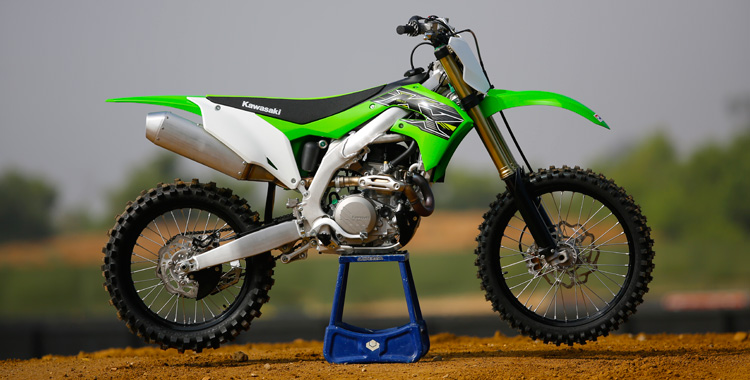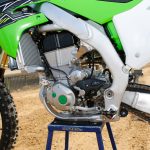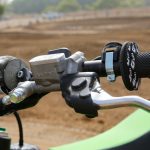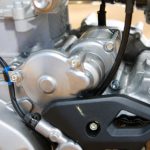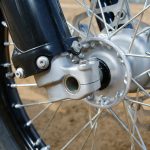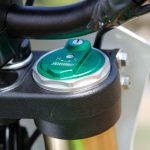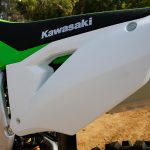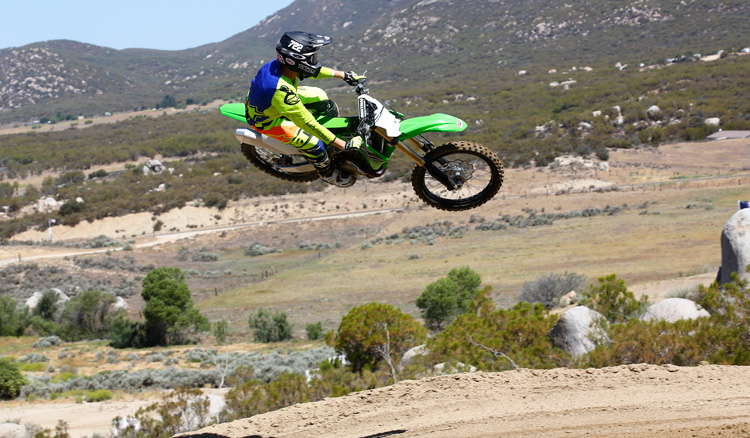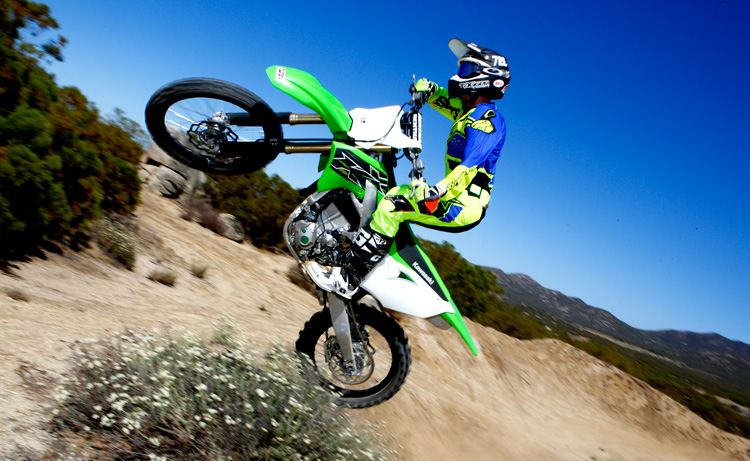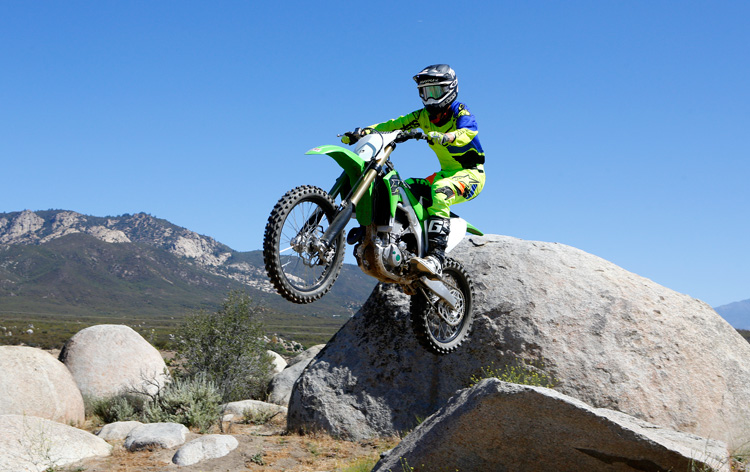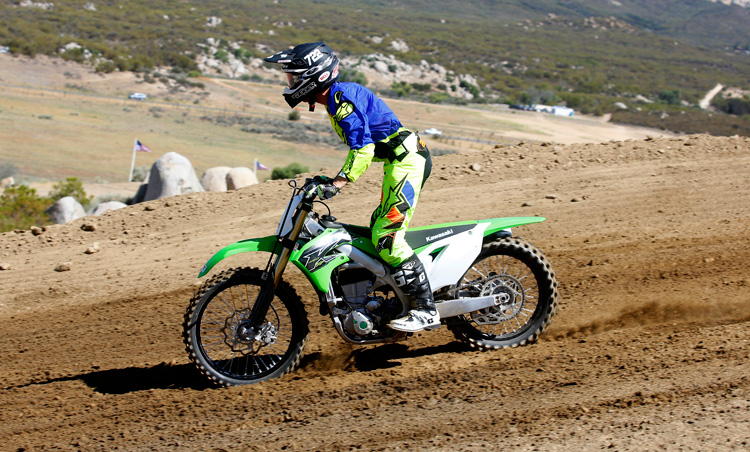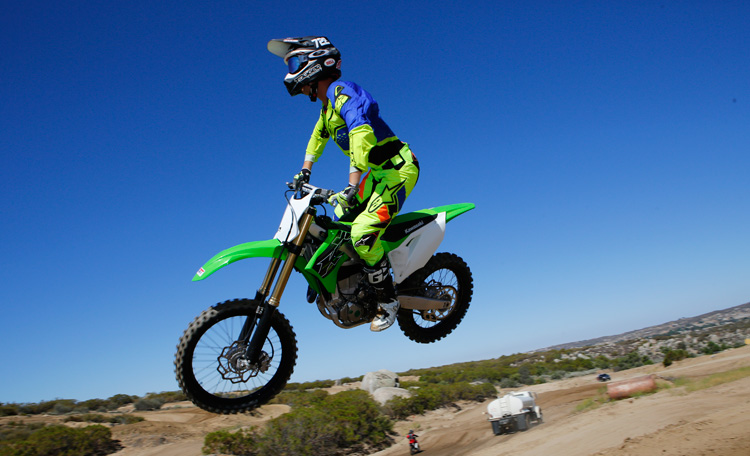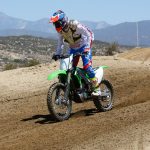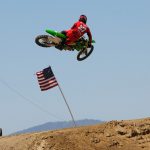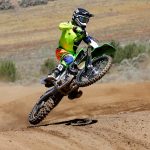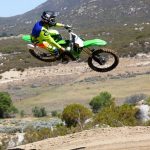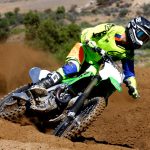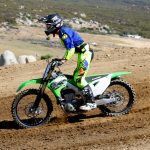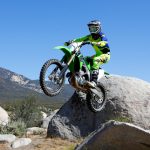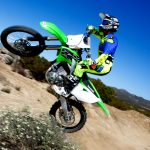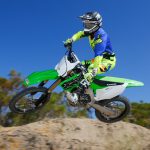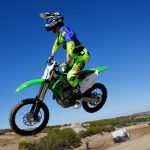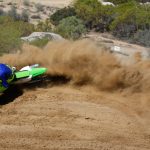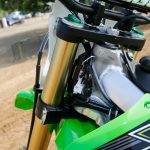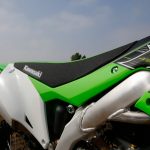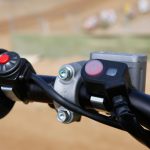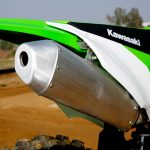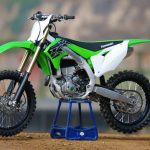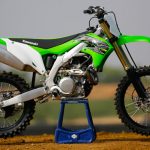2019 Kawasaki KX450: First Ride Impression
Not only did Kawasaki give the axe to the F on their moto line, they pretty much tossed the baby out with the bathwater with regard to the 2019 KX450. There is pretty much nothing left of the very popular, and very viable racer, the 2016-2018 KX450F. That very bike is still winning races with the likes of Eli Tomac, so why change it? That is a stupid question. They wanted to keep up with the Joneses and make it better, faster, and have better handling. This is a first impression but almost a test since we rode three different tracks with four different test rider opinions.
You are probably well aware of the changes such as electric start, hydraulic clutch, follow-finger valve train, new frame, swingarm, linkage, body work, and pretty much a full 49mm Showa A-Kit spring fork. So I am going to cut to the chase—what does it all mean? We took a seasoned rider who has bled green during the last two generations of KX450Fs and stuck him on the new 2019. Also note his 2017 was fully decked out with exhaust, suspension valving, bars, and dialed to his liking. After four laps on the 2019 he pulled in with a baffled and confused look on his face. I asked what was up and he could not believe this new bike was instantly better than his current steed in less than five laps. He said it turned better, had gobs of electric tractable power, and the new fork (not even broken in) was better than his fully valved air fork. Now if that is not a testament to what you have been reading about this new bike, I’m not sure what is. We tested our theory two more times after we dialed in the 2019 KX450 at Cahuilla Creek with two more longtime KX riders. Needless to say, they were all pissed off after riding the ’19 because they said their ’17 and ’18s felt dated, did not turn, and were not even close to tractable with regard to power. They said those few laps just cost them $18,000, or $4,500 per lap.
Now when we said they tossed everything out the window, we might not totally be right—we believe the front fender is the same. Kawasaki engineers were studying the trends and might have used this data to help craft what we are riding for 2019. But no matter what they did, it’s all good. The new 450 still feels Kawasaki-ish. It’s very stable but also feels light, but not too light. However, the difference is the turning. This four-fiddy likes to drop into turns and holds its line better than any KX450F we have ever ridden. The front wheel feels more planted than ever and you can actually steer the bike with the front or the rear with ease—another area that is not known to be very KX450F-like. I say F because before this year, it was the F model, now it’s just KX450. Confused? Yeah, me too.
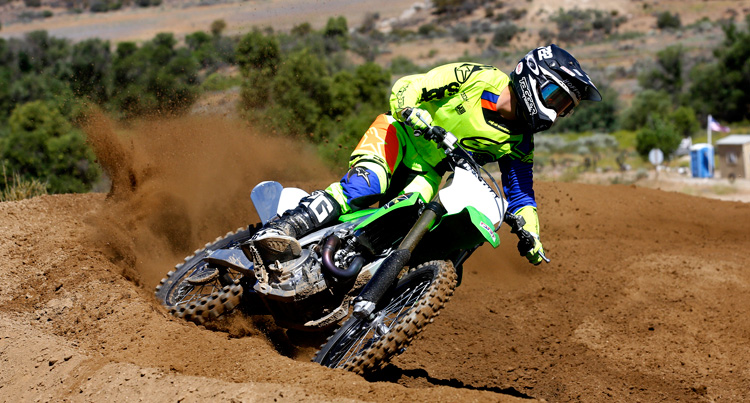
Like I noted above, there are a lot of “firsts” for Kawasaki. This is their first electric start motocross bike and the first Japanese motocross bike to come standard with hydraulic clutch. It’s also probably the first KX with an airbox access on the side since the ’80s. I can’t help but think that Kawasaki engineers were looking at what the competition, or should I say European competition, was doing and may have studied their playbook. Even the shock-locking mechanism no longer has two threaded locking rings but a single ring and a pinch device to lock the ring.
No matter how they created the new KX450, it’s a better machine and in our mind their best 450 to date. The frame has a new geometry and the steering head is shorter than in the past so triple clamps will not carry over from older models and neither will front wheels. As of right now, we doubt changing offsets will make it any better since it works so good stock. The ergonomics are very roomy and adjustable. Our taller riders 6’0″ and over all preferred to move the handlebar to the forward position in the clamp and reverse the clamp. Our 6’4″ rider moved the foot peg to the lower position. Smaller riders will also appreciate the standard settings. The chassis feels a little more compact but that could just be a feeling. The handlebar is a standard Renthal 971 but some riders said they might change the bend or the width if they owned a ’19 Kawi.
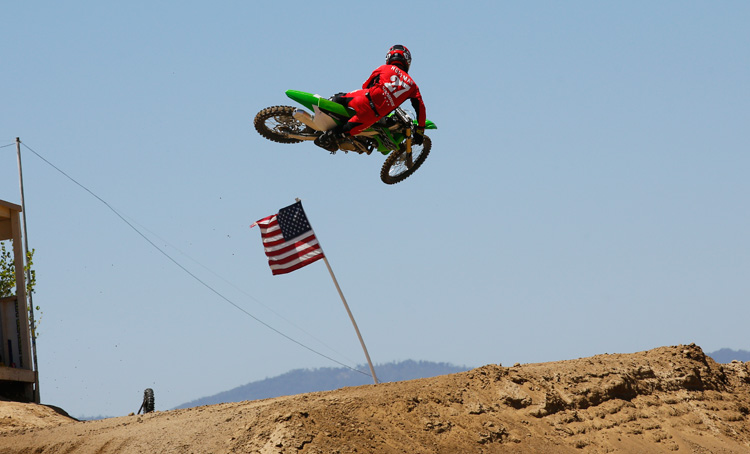
The hydraulic clutch pull is very similar to before but the advantage is the engagement point never changes. The clutch has a good feel and slipping the clutch also had an accurate feel. The levers themselves are narrow and some riders noted they might prefer a wider touch/contact point with their fingers.
The engine changes are very evident as soon as you mount the bike. The power delivery is so connected to the throttle it takes a second to get used to torque and traction on the new KX. The power does not ramp up like before unless you keep feeding it more throttle, then it just goes. The delivery in stock form is very linear. One rider said it did not have any top end but then I told him to twist the throttle further and hold on. Again, the throttle position is very connected to the rear wheel and you have to feed the throttle to keep the engine pulling. It takes a few laps to get it down but once you do, the engine puts a lot of traction to the ground and is fast. The engine management also has two optional couplers to switch from, more aggressive and mellow. The more aggressive coupler is very similar to the stock power curve but just ramps up a little faster and is noticeable when riding in softer conditions, it just pulls through the deep stuff a little faster. The mellow coupler is just that, a tame version and probably best suited for wet conditions or extreme hard-packed tracks. It’s just as easy to control the power with your throttle position rather than using the mellow coupler but when using the coupler it does do its job in certain conditions.
Engine
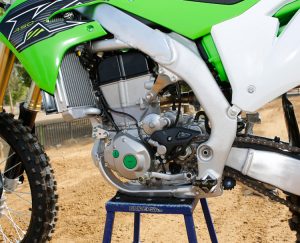 The even better news, even though the performance of the 2019 450 is so good, we think it can be better, and our test riders proved it. Kawasaki let us borrow one of their handheld KX Calibration Kits. We have used these in the past and love these suckers. No, they are not as handy as the Yamaha smartphone app and a lot more expensive, but they are equally as effective. We really like the new KX engine but some of our more aggressive riders wanted the engine to ramp up a little more in the middle or on jump faces when you might need that little boost. The stock curve is very tractable and fast but does not increase in intensity or have a hit. The tunability of this unit is amazing and it’s like having an adjustable exhaust at your fingertips. The unit also costs almost as much as an exhaust. We wish the unit was more affordable or dealers could rent the units by the week.
The even better news, even though the performance of the 2019 450 is so good, we think it can be better, and our test riders proved it. Kawasaki let us borrow one of their handheld KX Calibration Kits. We have used these in the past and love these suckers. No, they are not as handy as the Yamaha smartphone app and a lot more expensive, but they are equally as effective. We really like the new KX engine but some of our more aggressive riders wanted the engine to ramp up a little more in the middle or on jump faces when you might need that little boost. The stock curve is very tractable and fast but does not increase in intensity or have a hit. The tunability of this unit is amazing and it’s like having an adjustable exhaust at your fingertips. The unit also costs almost as much as an exhaust. We wish the unit was more affordable or dealers could rent the units by the week.
They are preprogrammed with maps but we created a few of our own by advancing the ignition by a few points in the mid range and messed with adding and subtracting fuel in that area and above. The idea is to let the power build more in the middle but also not rev through on top too fast so it doesn’t go flat up top. Several of our test riders had the opinion that it was overall a better power curve and more fun to ride, yet vet or less experienced riders may still prefer the stock curve. We just wish a curve with a more aggressive ramp into the mid was part of the aggressive coupler option. But nevertheless, the KX Calibration Kit is an amazing tool and if you are serious about the new or older KX, you should have one instead of an aftermarket exhaust in most cases.
Suspension
Does 2019 mark the eventual death of the all-air fork? It was a trend and for some it was just too complicated. The KX450F air fork worked pretty good when set up, but trying to get the perfect air balance between three chambers was a pain in the butt. Now you actually get a fork that is amazing and all you need to do is let air out of the fork before you ride. The new fork on the KX450 has pretty much the same internals, oil, and coatings as the production A-Kit fork. This is a fork that years ago racers were paying $5K for and now they come standard on the KX.
The fork and shock are very balanced right from the get-go. Most riders did make a few adjustments as it further broke in but for the most part they ended up going in the compression front and rear 3-5 clicks and slowed down the rebound as well to their liking. Sag was set from 102-105 and was adjustable for a wide variety of riders, even a few over the 200-lb range. The action of the suspension is amazing, predictable, and traction in the rear accelerating through chop tracks is amazing. Some of this might be attributed to the power delivery but the two work hand in hand in our opinion. Bottoming control is next level on hard landings and when shorting jumps. And when the fork does bottom, it’s a soft bottom and not a huge clunk. The fork does give indications it might be a little undersprung for faster or heavier riders as it can ride a little low in hard- braking bumps or bottoms when you land in transitional holes or whoops.

There are a few items that bugged us about the bike but none were deal breakers. The foot peg mounts have a small sharp edge on the bottom (easily fixed with a file). The air filter can drop dirt into the airbox when removed (be aware of this) and the filter cage indexes in the airbox are backward in our opinion so you have to go past the lip then pull it toward you first. (Just annoying the first time.) Hope someone will make all green side panels to match the airbox.
Brakes
The brakes have also been improved as well with a larger disc out back (250mm) and new master cylinder in the front. You can feel the added power and bite in the front and for some it took two rides to fully get a grasp of the added performance. The power is there and in some deep, hard, loose-braking conditions it can be too much until you get used to the feel. In the rear it’s another adjustment if you are coming off an older KX. The rear is more powerful and takes less pressure for full braking power. At first it was a little touchy but over time you get the feel of it. A few test riders lowered the pedal to lower the engagement point.
Also note that the 2019 does not come with a skid plate/lower engine protector but the mounts are there. We were able to bolt up a stock 2018 KX450 OEM plate right to the 2019 mounts—FYI.
On the Track Final Notes
For our first impression test we rode three different tracks with four different riders from young to old. The new KX feels like a Kawasaki but just better. All commented how effortless the bike was on the track and you were able to ride aggressive or mellow and it performed. This is the first KX450 that likes to turn and has a front wheel bias while entering turns. Some test riders, depending on the track, felt the slight amount of extra engine braking helped the KX initiate turns and from there the new chassis took over. On faster outdoor tracks with lots of elevation changes, the extra engine brake was more noticeable and when the conditions got dry you could feel the front wheel drift or push a tad bit while entering corners. Yet when the dirt is more tacky and the style of track is more jump filled with 180-degree turns and less elevation changes like Perris Raceway, the front wheel stuck like glue and you were rarely aware of extra engine braking. The added engine braking helped turning but in some cases at faster tracks, a few test riders said it was a tad bit too much or they needed more time on the bike to get used to the feel.
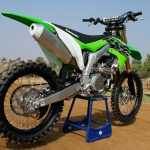 The chassis is very stable at speed but this chassis also turns and drops into ruts and does what no other KX450F has done in the past. The engine has plenty of power and with the tuner it can be made even better for some riders. Kawasaki has built an amazing motorcycle and those who have ridden the new bike have all raved how well it works in nearly every avenue. Yes, there are always things that some might not like or nitpick some fit and finish items but this is the best KX450 Kawasaki has ever developed and everyone who rode the bike said it was a huge improvement in all aspects when compared to the 2018, which is still a very good motorcycle if you don’t ride the 2019.
The chassis is very stable at speed but this chassis also turns and drops into ruts and does what no other KX450F has done in the past. The engine has plenty of power and with the tuner it can be made even better for some riders. Kawasaki has built an amazing motorcycle and those who have ridden the new bike have all raved how well it works in nearly every avenue. Yes, there are always things that some might not like or nitpick some fit and finish items but this is the best KX450 Kawasaki has ever developed and everyone who rode the bike said it was a huge improvement in all aspects when compared to the 2018, which is still a very good motorcycle if you don’t ride the 2019.
